By Cassie
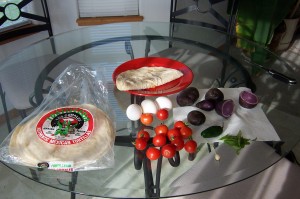
Gathered up the materials: Eggs straight from our hard working and feisty leghorn backyard chicken, basil (the chickens have helped our grasshopper infestation as well so we have more basil another benefit!), garlic clove, cherry tomatoes, jalapeno, potatoes (all from our garden) and tortillas from a Greeley tortilleria
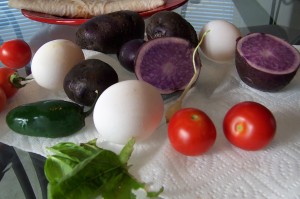
Purple potatoes are awesome! Unlike red potatoes, the potatoes are purple through and through. Britton didn’t even have to dig much at all to get these out of our garden
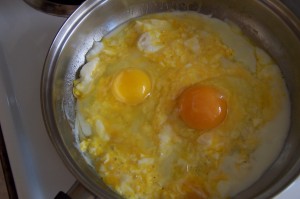
We had to use up some of the older store-bought eggs as well. Can you tell which is which? **Hint the local egg is bigger and oranger!** FYI-Free range eggs like these are much higher in omega 3 and have a closer omega 3/omega 6 ratio than industry eggs. This is mainly due to the fact that they can eat grass, bugs and other plants in addition to just feed
If you have never heard of the locavore movement, aka real food movement, aka local food security, aka 100 mile diet, aka food sustainablity and related to the organic food movement, this meal is a representative of this. It is not all that hard especially in the summer. Basically, the assumption is that we can use less fossil fuels, bring ourselves closer to nature, feed ourselves nutritious foods and avoid the atrocities that are committed every day in the conventional food industry such as genetically modified (GMO) foods, pesticide residue, chemical dependence and a disconnect from nature.
An example of this: Most egg and meat chickens in the conventional industry have their beaks burnt down when they are chicks so that they don’t peck the other chickens to death because they are so stressed. The local food movement (locavore movement) also avoids the monoculture tendency in the current farming practices which means you can grow a variety of things to eat rather than just fields and fields of corn (most of which is not to eat anyway).
This is a major reason why I am so excited to live in Puerto Rico. I can eat local and healthy here in Colorado in the summer (with a lot of help from sprinklers or it’d be too dry!), but not so much in the winters. I can’t wait until we can eat off of the land year round! In fact, there is often so much food that one family could never eat it all. Imagine: Oranges, grapefruits, passionfruit, mangoes for breakfast, fresh avocados, tomatoes, goat cheese, and eggs for lunch, and salad, beans, fried plantains and maybe some fresh meat for dinner with a fresh lime and mint with local Bacardi rum or a lime slice for a Medalla Light (local Puerto Rican beer). All from your own yard or within 100 miles! And that’s just an idea…I am sure we will have to be very creative in order to use all the different things out there.

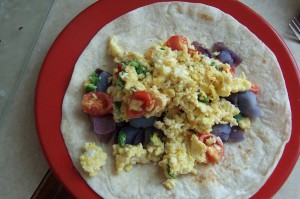
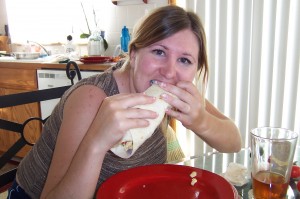
I’m really geared up to have an indoor garden this year. It should be nice having all the summer treats produced over the cold winter months. Not sure how that will all work out, but hey its worth a shot.
The idea of buying local is a great idea. I often wonder if the companies that we end up buying from share that same idea. For instance I wonder where the Greeley Tortilleria buys all their supplies from? Do they go to local mills and purchase directly or do they buy from the cheapest supplier who could be thousands of miles away?
We just went to Cub Scout Camp where we worked on a conservation project tied to the Leave no Trace principals. It was interesting to see the impact people have on areas just by walking on them. It was also shocking to see how long it takes to rebuild the damage done. It made me much more aware of the impact we have when we drive, put up stores, build houses, etc.
That’s what I’m talking about! Just imagine, we are just waking up to this (awareness) most people are not even that far in thought and walk around blindly oblivious “trampling” on everything.
Here is something kinda cool. May come in handy in Puerto Rico 🙂
http://www.greentechgazette.com/index.php/pedal-power/aquaduct-mobile-filtration-vehicle-wins-google-contest/